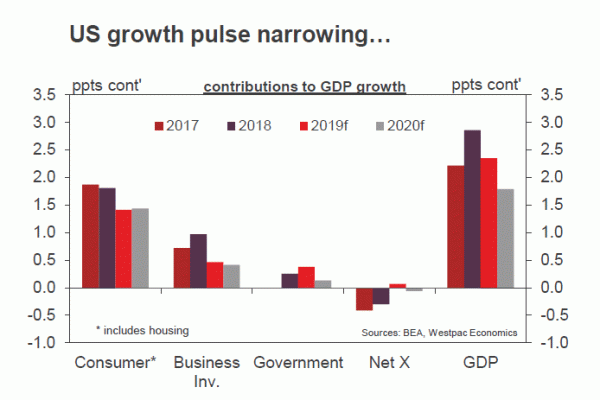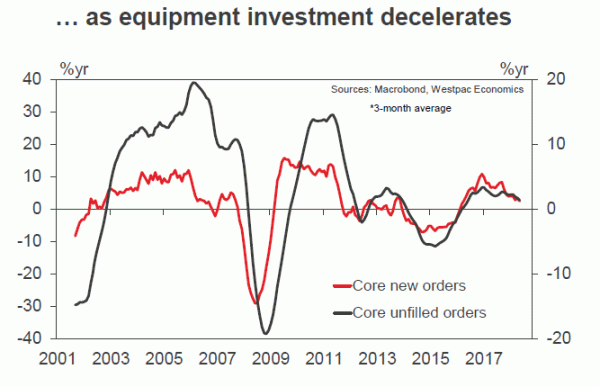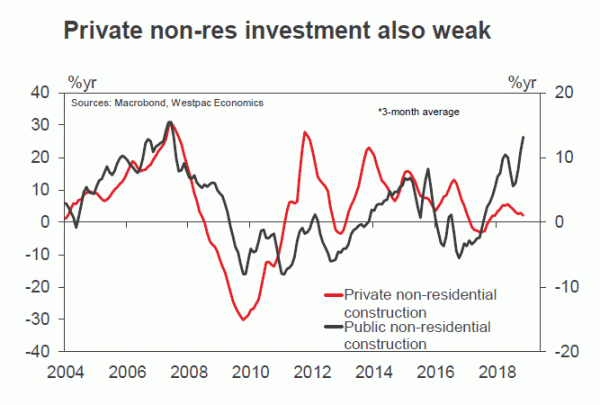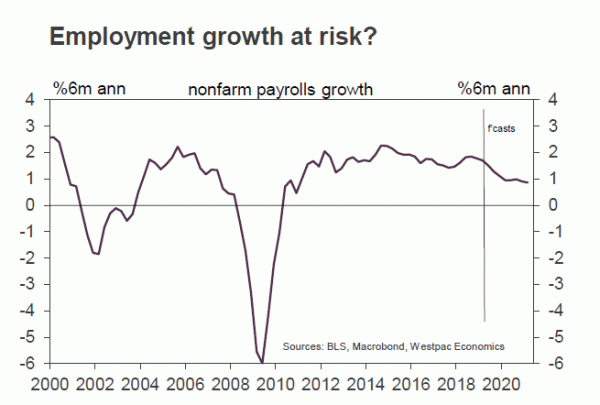At the June meeting, the FOMC’s stance on monetary policy shifted materially. While their core view of the economy remains constructive, ‘uncertainties’ now dominate.
‘In light of these uncertainties and muted inflation pressures, [ahead] the Committee will closely monitor the implications of incoming information for the economic outlook and will act as appropriate to sustain the expansion.’ Front of mind for the Committee in terms of these ‘uncertainties’ is US trade policy and its impact on US business investment.
Beginning with the core view, it clearly remains constructive. The only real economy forecast to see material revision in June was the 2019 inflation view, which was revised down from 1.8% to 1.5%. Arguably this revision is a consequence of (purportedly transitory) weakness in PCE inflation since the March meeting rather than fears over the future path. Supporting this view, core inflation is seen at 1.8% in 2019 (previously 2.0%) then 1.9% and 2.0% in 2020 and 2021 respectively.
There was also essentially no change in the GDP forecasts, with above-trend growth still seen across the forecast horizon, while the unemployment rate forecasts were actually marked a touch lower – despite May’s material disappointment for nonfarm payrolls.
That seven participants now see two cuts in the federal funds rate by year end, and another member one cut, highlights the above core view has slipped into the background. Front of mind is instead the risks from US trade tensions with China and others and, more broadly, anxiety over global growth. The meeting between President Xi and President Trump at the Osaka G20 in a little over a week will be particularly key for US monetary policy.
If these risks are significant enough to detail at length, then why not cut now? As made clear in the Press conference, the reason is that the Committee want to respond to trends that are sustained, not temporary noise.
To the extent that trade tensions have really only escalated (again) in the past month, the FOMC clearly want to gain a greater understanding of their persistence and the consequences for the US economy.
In our recent analysis of the US economy, we have highlighted that business investment was already soft and likely to slowly deteriorate hence. Further, we also cited the risk that employment could also be affected by current tensions. The baseline trade assumption that underpinned this view was that US trade hostilities would not escalate further with any nation in the months ahead but, that without a clear conclusion, another point of tension would be anticipated around the corner.
Under such a scenario, a pro-active but measured approach to policy is called for from the FOMC, cutting twice by year end, most likely in September and December. From today’s communications, it seems as though the FOMC are broadly aligned to this view. Very clearly though, there are considerable risks to this call, most notably of quicker action from the FOMC.
To the downside, there is a material risk that, after the Osaka G20 meeting, President Trump extends the 25% tariff to the remaining $300bn of US imports from China. Given the soft state of US investment and fragile confidence amongst business, under such a scenario, the FOMC could easily justify bringing forward the first cut to July and showing stronger concern over the outlook. The risk of the imposition of this tariff soon after could also see the FOMC act in July. To see the FOMC deliver more than two cuts over the coming year however, consumption would have to weaken along with investment. While not our base view, given the surprisingly weak employment outcome of May and as wages growth looks to be turning down, it is a risk worth watching.
Upside risks are lower probability and also likely transitory. The one to call out is clear evidence of a resolution to US/ China tensions at the Osaka meeting. If this occurs, near-term rate cuts would be put off. That said, based on his actions of the past year, it seems highly unlikely that President Trump will abandon his trade agenda all together ahead of the 2020 Presidential election. Hence an easing bias would remain warranted ahead of a potential immanent re-escalation of tensions with China or another party.

















